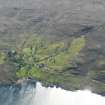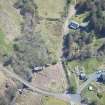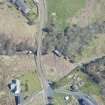Pricing Change
New pricing for orders of material from this site will come into place shortly. Charges for supply of digital images, digitisation on demand, prints and licensing will be altered.
Upcoming Maintenance
Please be advised that this website will undergo scheduled maintenance on the following dates:
Thursday, 9 January: 11:00 AM - 3:00 PM
Thursday, 23 January: 11:00 AM - 3:00 PM
Thursday, 30 January: 11:00 AM - 3:00 PM
During these times, some functionality such as image purchasing may be temporarily unavailable. We apologise for any inconvenience this may cause.
Naust
Dam(S) (20th Century), Pump House(S) (20th Century), Water Tank (20th Century)
Site Name Naust
Classification Dam(S) (20th Century), Pump House(S) (20th Century), Water Tank (20th Century)
Canmore ID 172684
Site Number NG88SW 5
NGR NG 82757 83140
NGR Description Centred NG 82757 83140
Datum OSGB36 - NGR
Permalink http://canmore.org.uk/site/172684
- Council Highland
- Parish Gairloch
- Former Region Highland
- Former District Ross And Cromarty
- Former County Ross And Cromarty
NG88SW 5.00 centred 82757 83140
NG88SW 5.01 NG 8290 8350 Pier
NG88SW 5.02 centred NG 8308 8317 Anti Aircraft Battery
This World War II pump station for fresh water is now a private house with most of the elements of the site on private land. The pump house, water tank, pipework and the pier are on the E side of the road. The two dams and some pipework are on the W side.
Loch Ewe was a convoy assembly point and Naval Anchorage, where a lot of ships would require fresh water, The large house, now painted white was the Admiralty Pump House. The large circular tank, depicted on the current OS 1:10560 map (1968) has been removed.
J Guy 2000; NMRS MS 810/10, Vol.1, 49, Vol.3, 25-6
A visit to the former pumping station/tank found that though a house has been built on the site, some of the filtration system survived in the lower part of the building. The present owner has retained elements of the water system in the basement of the house. A further two brick built buildings, (NG 82750 83391), one of which retains soem inetrnal pipework are situated about 17m S of the Allt Donn just E of the road bridge.
The jetty was not visited.
The large 30m diameter tank shown on the OS 1:10560 scale map is visible on RAF vertical air photographs (CPE/Scot/UK183, 4258-4259, 8 October 1946) within an embanked semi-enclosure. Several huts and hut bases are also visible in the vicinity, including a group of three hut bases at NG 8308 8317 (NG88SW 5.02).
The jetty, (from NG 82888 83469 to NG 82915 83537) also seen on the air photographs is depicted on the current OS digital 1:2500 scale maps.
Visited by RCAHMS, (DE,GS, JG, SW), August 2000
Note (15 November 2013)
The pump house recorded by a previous RCAHMS visit, does not date to the Second World War, as it not shown on an RAF vertical aerial photograph (CPE/Scot/UK183 4258 flown 8 October 1946). The building is post war and is clearly industrial and of one build, which has since been converted to a house. To the N of the pump house was the tank which was in use during the Second World War. The tank was c.40m in diameter and had a bund on the NE downhill side. The tank had a pipeline to the shore by the jetty. Where the pipe is exposed by the shore line there is a valve. The end of the pipe has a flange which suggests it was connected to a flexible pipe which extended out to load the waiting boats. At low tide concrete foundation are exposed which may have supported some kind of support frame for the flexible pipe.
As previously reported the tank was thought to be water supply fed by local streams. There is some debate in the local community about the use of the tank at Naast.
If the tank was used for water, there does not appear to be any treatment works to clean the water. The need for a pump house confuses the issue as no pumping should be required as the pipeline to the shore would be gravity fed. The two Second World War buildings at NG 82846 83157 (NG88SW 5.03) have been identified as a pump house and store, which appears to be used to pump water. Pipe work which runs from a small dam uphill beside the nearby road bridge runs into the pump house and the outflow pipe runs southwards in the direction of the tank. The water supply could be used to clean and maintain the tank if it was an oil tank.
Given the lack of treatment works and the presence of the post war pump house and the high pressure valve on the pipeline would suggest that this may have been for heavy fuel oil. No other onshore oil tanks exist at Loch Ewe, however fuel may have been supplied from a tanker moored in the loch. According to local people the water supply for Royal Navy ships was at Aultbea.
Visited by RCAHMS (AKK) 11 October 2013.
















